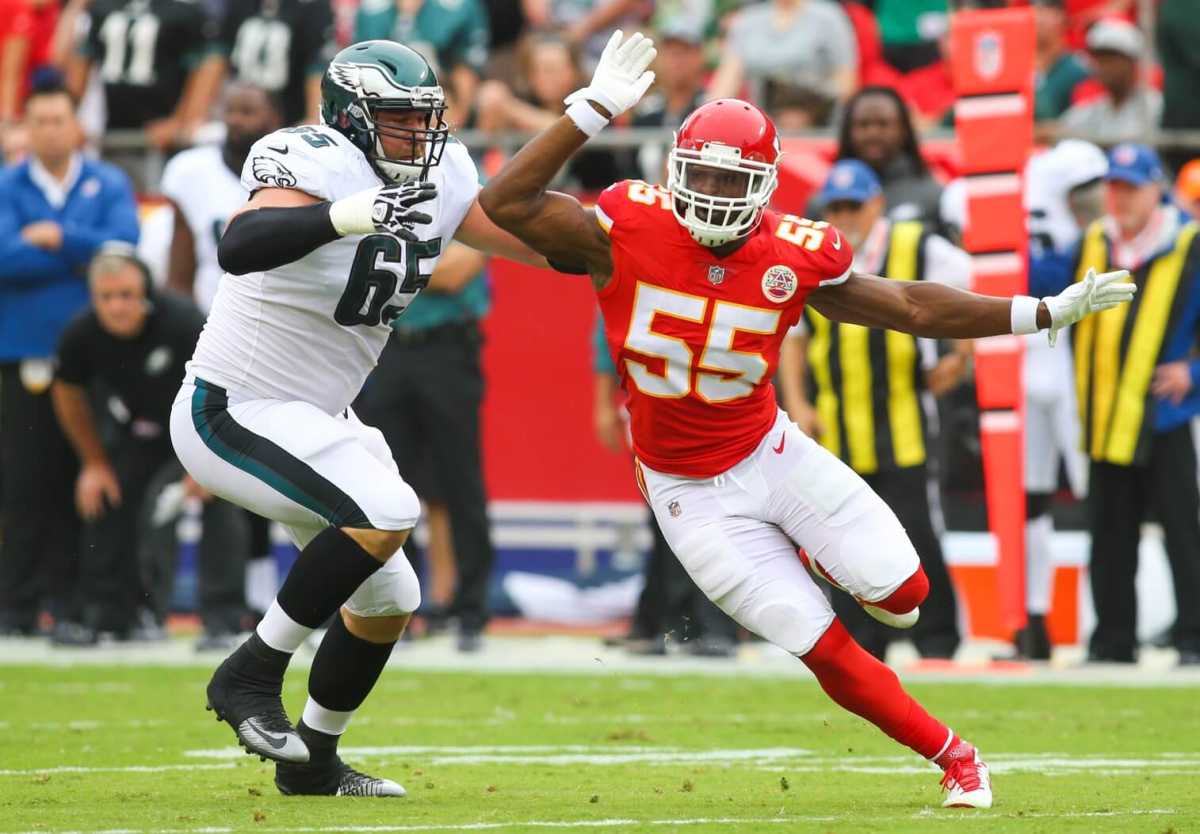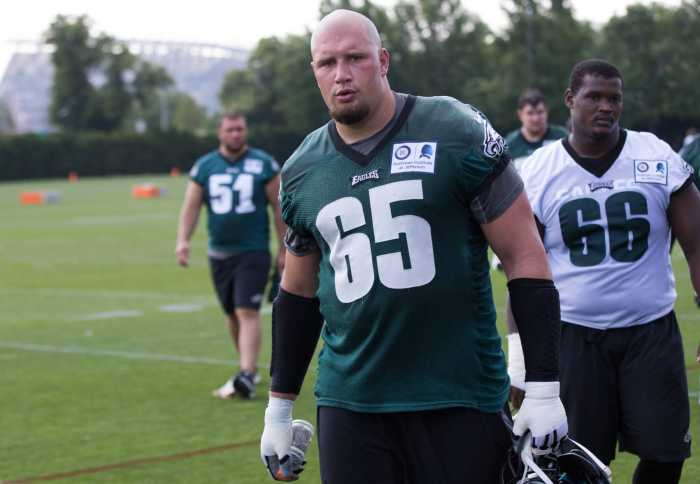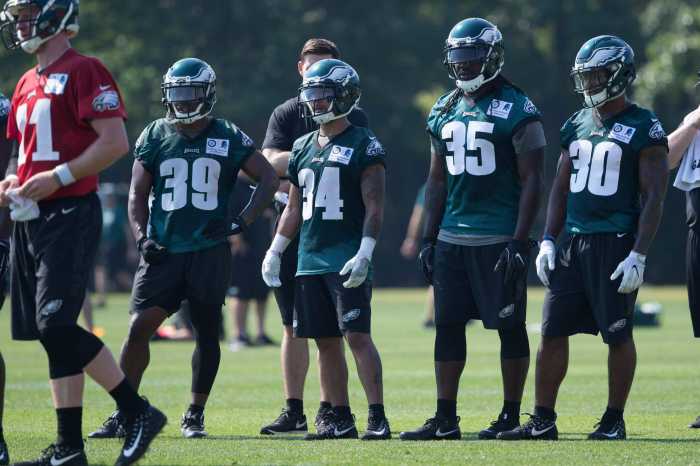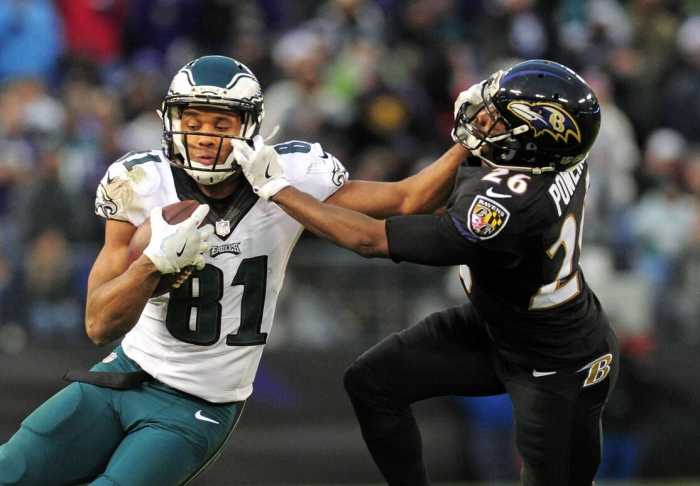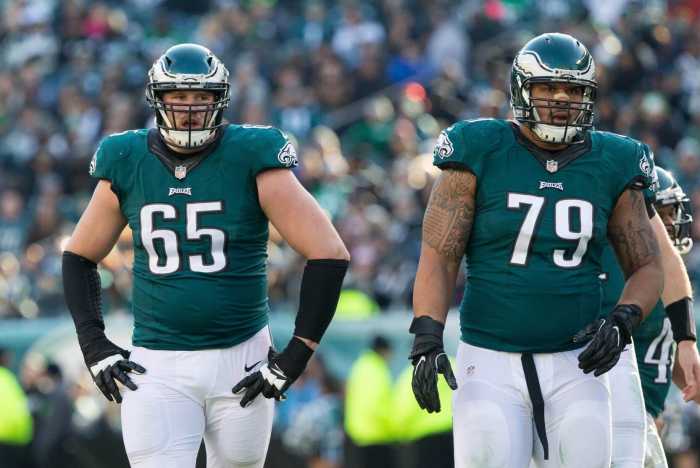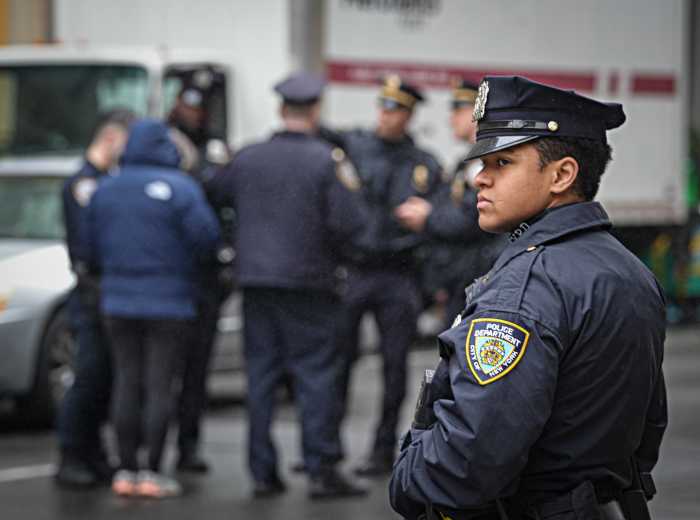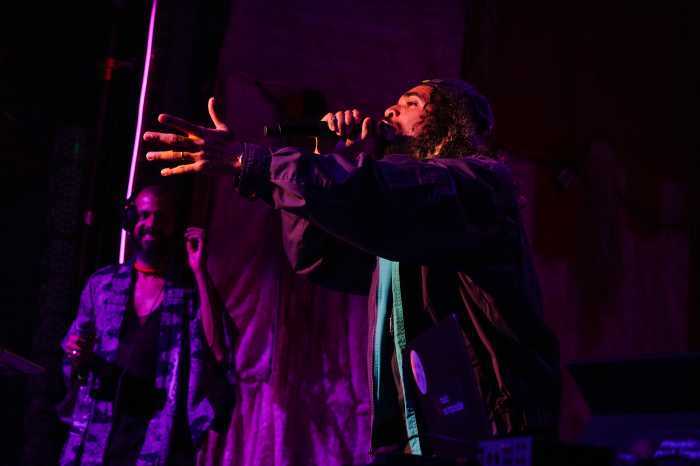This offseason was pivotal for the Philadelphia Eagles. An infusion of talent on Offense was supported by a Draft that strengthened the core positions defensively. One constant between last year and this year however, was the offensive line. With Lane Johnson returning, expectations were high were for a unit that poses two of the finest tackles in the league and a slew of inside talent. Things didn’t start off swimmingly however.
Jason Peters limped off the field in the season opener against Washington and in his place stepped Halapoulivaati Vaitai; a second-year tackle who had his trial by fire against this Defense one year ago. This was partnered by a struggling Isaac Seumalo at Left Guard who had not only been named the starter just weeks before, but had all insurance policies stripped from beneath him. Allen Barbre was sent to the Denver Broncos, and Chance Warmack was listed as inactive.
The result of all of this was less than pretty. The Eagles had a dismal rushing attack. With 20 carries for 52 yards (2.6 ypc) and a longest of 7 painting a very dull picture for a committee effort. Wentz may have only been brought down twice, but was hit a total of nine times as the Redskins continuously pounded the edge of the pocket.
One week later, Jason Peters returned and the ‘resurgence of Isaac Seumalo’ narrative caught the eyes of many. Unfortunately, we saw much of the same. The Birds’ ran the ball 13 times for 52 yards (4.0 ypc) with a longest of 12…all without LeGarrette Blount. This time around however, life was far more difficult for Carson Wentz. Sacked six times, the Eagles quarterback was hit a total of 11 during the matchup against Kansas City. By this point, it became clear that Isaac Seumalo was struggling, the Eagles backfield needed an injection of life, and penalties along the line began to sting the Offense.
What could be suffocating such an esteemed unit? The starting unit rarely played together throughout the preseason, with the Eagles instead deciding to work out who will fill the depth positions. No more Barbre, no more Tobin. The Eagles went younger and more versatile along the offensive front, but with a lack of experience comes a lack of chemistry. If the starting unit are only playing in a couple of series at most each game, there’s only so much of a bond they can build.
With Jason Peters missing the entire preseason and Isaac Seumalo being pushed up to the starting left guard role, the offensive line certainly felt a momentum shift during the offseason. Seumalo and Kelce allowed a sack in week one due to miscommunication…but these errors would begin to iron out.
In week three, things began to change. The Eagles pushed Chance Warmack into the game for his first taste of starting action as an Eagle and although it was turbulent at times, the Eagles seemed to find their groove along the offensive front. Stefen Wisniewski was able to slot in as a Left Guard by committee and it worked surprisingly well. Is it sustainable? Only time will tell, but the duo complimented each-other’s skillsets, with Wisniewski able to defend the pass slightly better than Warmack, who is able to carve open running-lanes with ease.
Paving the way for a backfield breakout that racked 171 yards (5.2 ypc) and a pair of touchdowns, the line helped keep Wentz upright much more efficiently. He was sacked just three times and hit only four. A stark contrast to what we saw just one week prior to Jake Elliott’s late game heroics.
The penalties began to disappear, the athleticism of Jason Kelce and Brandon Brooks was on show consistently throughout and the bruising bookend tackles once again earned their reputation. One game later however, they’d face their toughest task yet.
The Chargers pass rush is a unit that has emerged as one of the league’s best in recent years. Melvin Ingram and the explosive Joey Bosa combined for 23.5 sacks in their fifteen most recent games prior to the meeting with Philadelphia. The Eagles pitched a shutout. Wentz was brought down just once the entire game as the furious Chargers pass-rush was kept outside the gates all afternoon. Beyond the pocket, things were even more impressive. The backfield rushed for 200 yards (5.6 ypc) and a score, including THAT “beast mode” run from LeGarrette Blount.
All of a sudden, the Eagles Offensive line had no deficiencies. There were no questions. A committee effort at left guard gave Pederson the short-term answer he craved, and Wentz was given all the time the world to make some beautiful passes deep down the field.
“The offensive line, we talk about this as coaches, has to play as a unit, have to play as one.” Doug Pederson told reporters recently. “When you have injuries and the guys aren’t playing together that long, there’s going to be some disruption up front, the timing of blocks. We saw it a little bit in the Washington game, the first game, not so much the assignment errors, but the timing of blocks. What you’re seeing now is all that coming together. These are the same runs that we’ve always used. We just window dress them a little bit differently, present them a little differently to the defense.”
Playing as one. This is no longer just a set of elite offensive lineman who are bursting with potential and leadership. It’s one cohesive unit who are beginning to click in a way we haven’t seen for a long time. It’s taken a little while, but the Eagles Offensive line may well be ready to take on that crown of being known as the “best in Football”.
Mandatory Credit: Jay Biggerstaff-USA TODAY Sports

